A Paradigm Shift in Healthcare Delivery
The healthcare industry is undergoing a profound transformation fueled by the integration of cutting-edge technologies into personalized preventive care. As chronic diseases and complex health challenges rise globally, the shift from reactive treatments to proactive health management is more critical than ever. Advances in artificial intelligence (AI), genomics, wearable technology, telehealth, and big data analytics are enabling unprecedented customization of prevention strategies, early detection of disease risks, and continuous health monitoring. This article explores how these technological innovations are converging to create a new era in personalized preventive healthcare, the current landscape and trends, challenges in adoption, and promising future directions that promise to reshape health outcomes worldwide.
Integrating Technology for Enhanced Personalized Preventive Healthcare
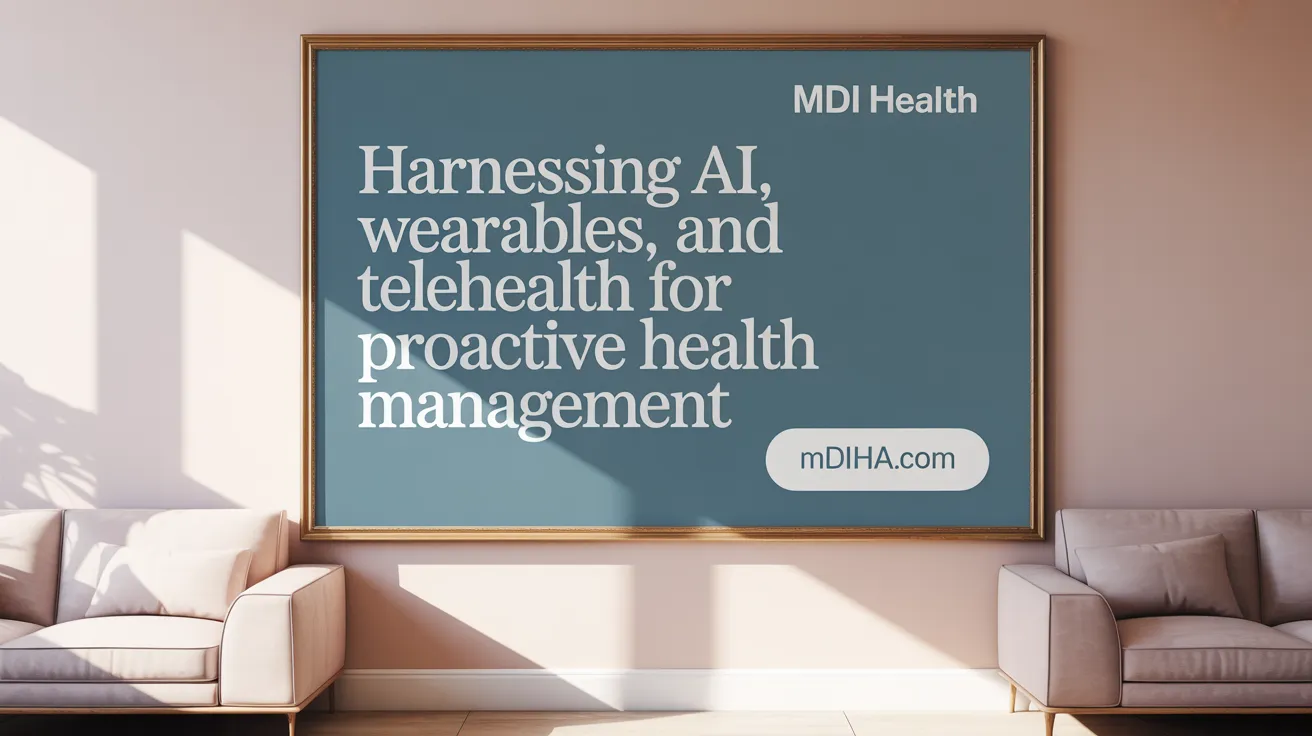
How is technology integrated into personalized preventive healthcare to improve health outcomes?
The advancement of digital tools and platforms has revolutionized how healthcare providers approach prevention and early intervention. By harnessing the capabilities of artificial intelligence (AI), wearable devices, telehealth, and digital therapeutics, healthcare is becoming more proactive and personalized.
AI-driven data analysis plays a crucial role by processing vast amounts of information, including genomic data, environmental factors, and individual lifestyle habits. These algorithms can identify early biomarkers and predict disease risks with high accuracy. This capability enables healthcare professionals to design tailored prevention plans, optimize screening schedules, and implement timely interventions.
Wearable devices, such as smartwatches and biosensors, facilitate real-time health monitoring. They continuously track vital signs like heart rate, activity level, and blood glucose, providing valuable data that can alert patients and clinicians to potential health issues before symptoms appear. This constant stream of information supports early detection of conditions like atrial fibrillation or diabetes, enabling preventative measures.
Telemedicine platforms extend healthcare access by allowing remote consultations, follow-ups, and health coaching. These digital interactions help patients stay engaged with their health, adhere to treatment plans, and receive personalized advice without the need to visit healthcare facilities physically.
Digital therapeutics, including mobile health apps, promote behavior change and facilitate compliance with preventive strategies. They often incorporate AI to adapt content based on individual progress and preferences, making interventions more effective.
However, integrating these technologies is not without challenges. Ensuring data privacy, minimizing bias in AI models, and making these innovations accessible to diverse populations are critical to maximizing their impact.
Overall, technology enhances personalized healthcare by enabling continuous health assessment, early risk detection, and customized prevention strategies. This shift towards patient-centered, predictive care significantly improves health outcomes, reduces disease burden, and empowers individuals to take charge of their health.
Artificial Intelligence and Data Analytics: The Cornerstones of Modern Preventive Care

What role do AI, data analytics, wearables, and telehealth play in transforming preventive healthcare strategies?
AI, data analytics, wearable devices, and telehealth technologies are central to a new era in preventive medicine. They enable continuous, real-time monitoring of health metrics, which helps identify potential health issues early, often before symptoms appear.
Wearable devices such as smartwatches and fitness trackers monitor vital signs like heart rate, blood pressure, oxygen saturation, and activity levels. This constant data flow provides insights into a patient's baseline health and can flag deviations signaling possible health problems.
Artificial intelligence enhances this process by analyzing large data sets from wearables, electronic health records, and genetic information. AI models can detect patterns, predict disease risks, and support early diagnosis. For example, AI-powered imaging software improves accuracy in detecting conditions like breast cancer or cardiovascular issues.
Predictive analytics, a subset of AI, uses historical and real-time data to forecast health outcomes, allowing for targeted and personalized prevention strategies. It can identify individuals at high risk for diseases such as diabetes or heart failure, guiding early interventions.
Telemedicine complements these tools by providing remote access to healthcare professionals. Patients in rural or underserved areas can receive timely consultations, health education, and follow-up care without the need for travel.
Together, these technologies shift healthcare focus from treating diseases after they occur to preventing them altogether. They enable a proactive approach that can improve health outcomes, reduce hospitalizations, and lower overall healthcare costs.
The integration of AI, analytics, wearables, and telehealth is creating a more personalized, efficient, and accessible healthcare system—transforming prevention from an occasional effort into a continuous process tailored to each individual.
Wearable Devices and Telemedicine: Bridging Continuous Care and Accessibility
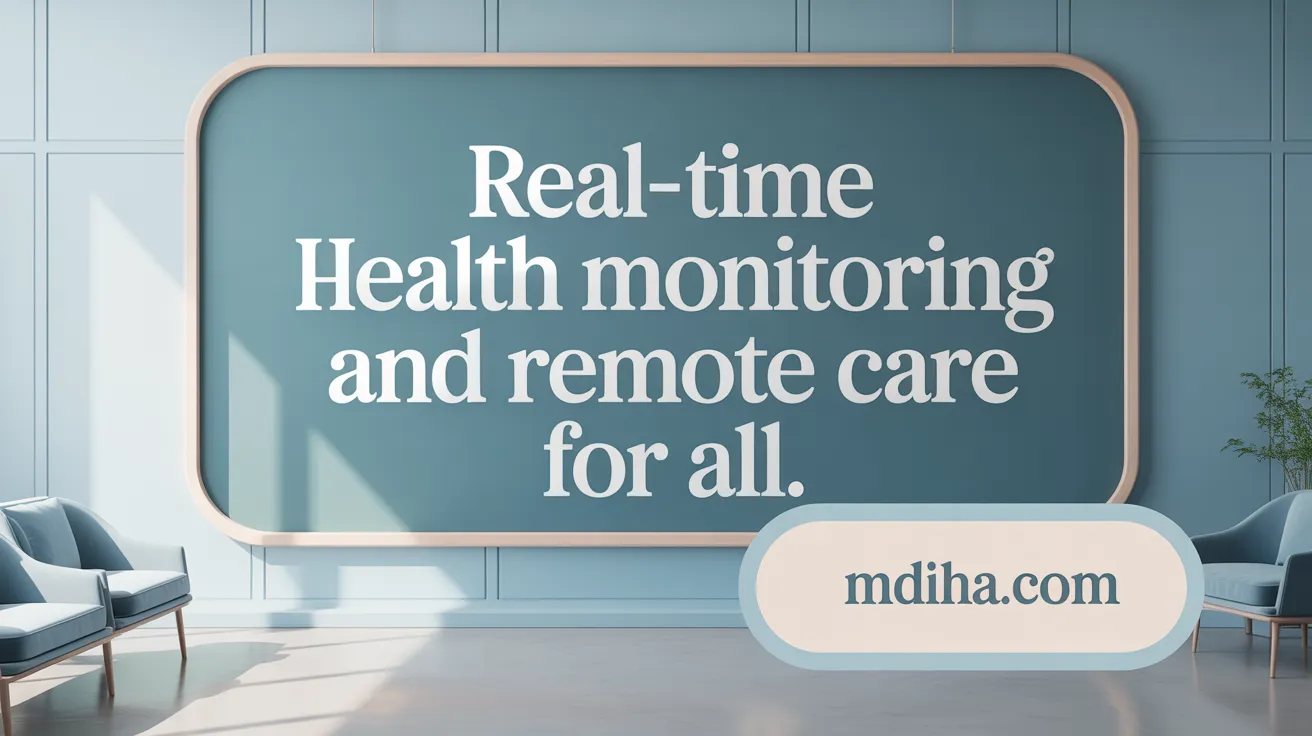
Capabilities of wearables in health monitoring
Wearable devices such as smartwatches, fitness trackers, and biosensors are revolutionizing health monitoring by providing real-time data on vital signs like heart rate, sleep patterns, activity levels, and even blood oxygen levels. These devices continuously collect health metrics outside clinical settings, allowing for early detection of potential issues. Advanced sensors and algorithms can identify irregularities, such as arrhythmias, alerting users and healthcare providers promptly.
Advantages of telemedicine in prevention
Telemedicine extends healthcare reach beyond traditional clinics, offering remote consultations, health education, and ongoing support. This approach facilitates early diagnosis and enables continuous management of chronic conditions, reducing hospital visits and improving health outcomes. Patients in rural or underserved areas particularly benefit from telehealth services, which make preventive care more accessible, convenient, and personalized.
Integration with healthcare systems
The seamless integration of wearable devices and telemedicine with electronic health records (EHRs) enhances data sharing and coordination among healthcare providers. Digital platforms enable personalized prevention programs based on individual risk profiles, continuously updated with real-time surveillance. Such integration supports a shift from reactive treatment to proactive health management, emphasizing prevention and early intervention.
By harnessing these technologies, healthcare systems are moving toward a future where continuous, patient-centered care becomes the norm, improving overall health outcomes and efficiency.
Genomics and Precision Medicine: Tailoring Prevention at the Molecular Level
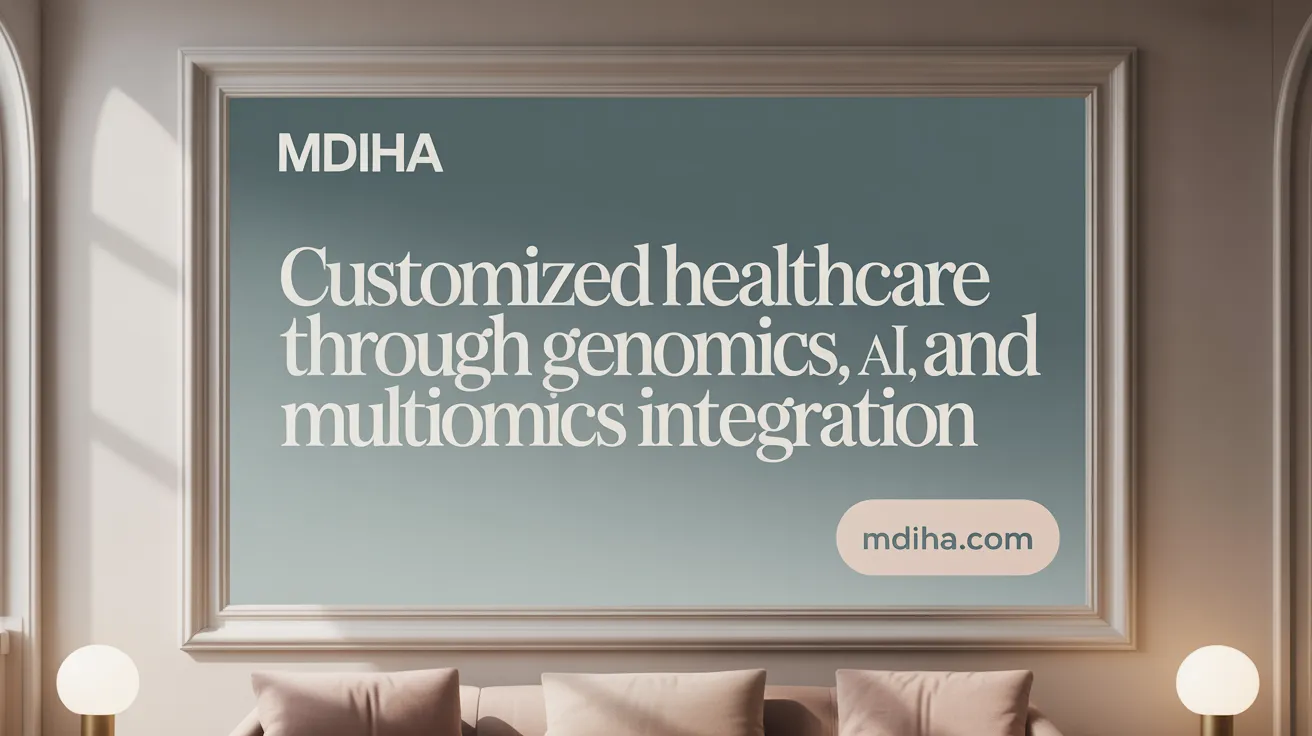
What are the current trends and recent advancements in integrating technology into personalized healthcare?
The landscape of personalized healthcare is rapidly evolving, driven by the integration of advanced technologies. Recent trends show extensive adoption of artificial intelligence (AI), wearable sensors, and Internet of Things (IoT) devices to collect and analyze health data continuously. Blockchain technology is increasingly used for secure and transparent data management.
One of the most significant developments is the use of AI-powered predictive analytics, which assists clinicians in early diagnosis, risk assessment, and personalized treatment planning. Wearable devices provide real-time monitoring of vital signs such as heart rate, blood glucose, and activity levels, enabling early intervention and continuous health management.
Interoperability standards are also improving, allowing seamless sharing of data across different healthcare systems. This connectivity supports comprehensive patient profiles that include genetic, clinical, and lifestyle information, paving the way for truly personalized medicine.
Innovations such as AI-driven diagnostic platforms, virtual health assistants, 3D bioprinting, and neural interfaces are expanding treatment options and enhancing patient engagement. The convergence of genomics, biotechnologies, and AI fosters precision medicine, enabling therapies tailored to individual genetic makeup.
Despite these advances, challenges like ensuring data security, addressing ethical concerns, and achieving broad equitable access are ongoing areas of focus. Continued research and evolving policies aim to overcome these hurdles, further integrating technology into preventive and personalized healthcare.
How do polygenic risk scores influence disease prevention?
Polygenic risk scores (PRS) aggregate the effects of numerous genetic variants to estimate an individual's susceptibility to specific diseases such as breast cancer. These scores enable stratified screening programs, where high-risk individuals receive more frequent or early screening, while low-risk individuals avoid unnecessary procedures. This targeted approach enhances early detection and prevention.
What is the role of genotype-guided treatments?
Genotype-guided treatments utilize a patient's genetic profile to select the most effective and safest therapies. For example, in pharmacogenomics, dosing of warfarin is adjusted based on genetic variants to reduce adverse effects. Similarly, targeted cancer therapies are chosen based on tumor genetic mutations, improving treatment outcomes and reducing side effects.
How does the integration of multiomics data advance personalized healthcare?
Multiomics integration combines genomics, transcriptomics, proteomics, and metabolomics data to provide a comprehensive view of an individual's health state. This holistic approach helps decode complex disease mechanisms at the molecular level, facilitating precise diagnosis, risk assessment, and tailored interventions. As a result, treatments become more effective, and preventive strategies more proactive.
| Technology/Concept | Application Example | Impact on Healthcare |
|---|---|---|
| Polygenic risk scores | Breast cancer risk assessment | Stratified screening, early detection |
| Genotype-guided treatment | Warfarin dosing adjustment | Safer, more effective therapies |
| Multiomics data integration | Disease mechanism elucidation | Personalized diagnostics, tailored treatments |
Advances in these areas are transforming healthcare from a reactive model to a proactive, patient-centered approach, aiming to prevent disease before symptoms even emerge.
Early Detection and Predictive Analytics: A Shift Towards Proactive Healthcare
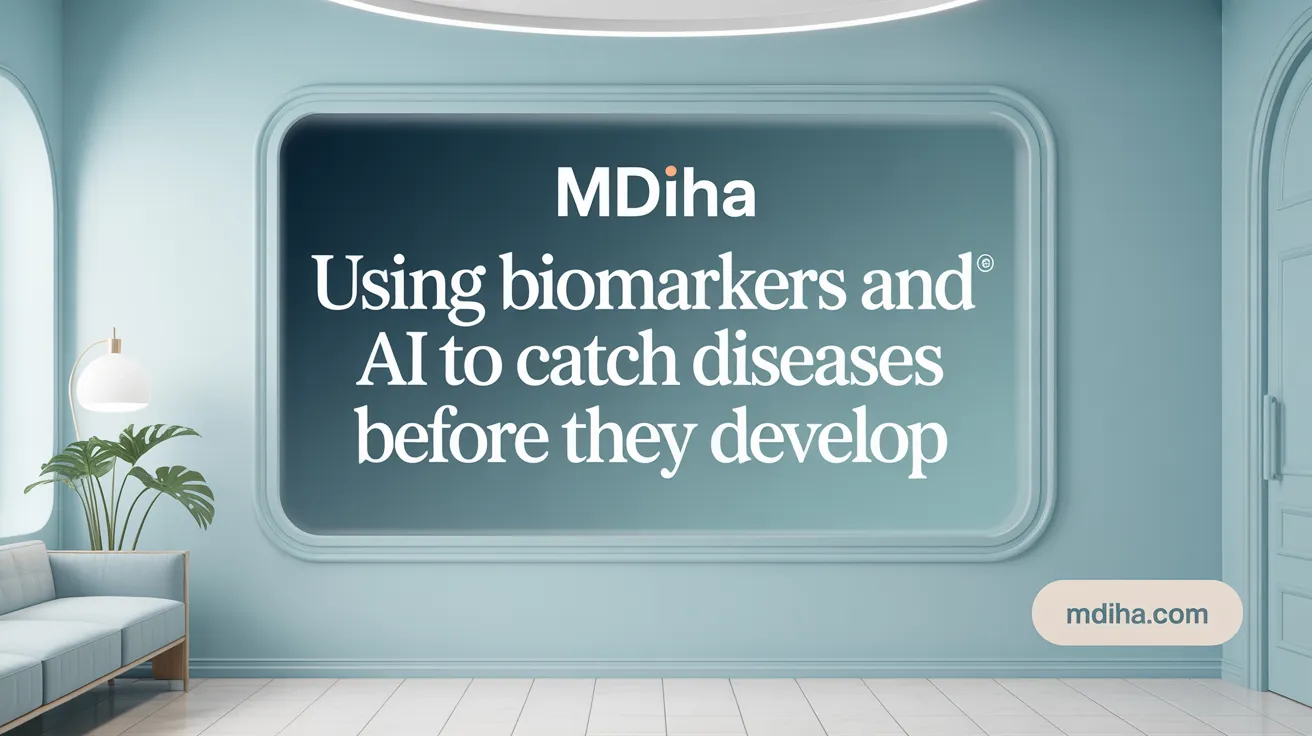
How is the use of biomarkers and AI facilitating early disease identification?
Biomarkers—biological indicators of health or disease—are transforming the way medical professionals detect diseases at their earliest, often subclinical, stages. Coupled with artificial intelligence (AI), these biomarkers enable rapid and accurate screening.
AI algorithms analyze complex biological data from genomics, blood tests, or digital biomarkers to identify subtle anomalies that suggest disease onset. This combination allows for earlier diagnosis, often before symptoms become apparent, which is crucial for conditions like cancer or cardiovascular disease.
What role do predictive models play in understanding disease progression?
Predictive models leverage vast amounts of health data, including electronic health records (EHR), genetic information, and lifestyle factors, to forecast how a disease may develop or change over time. These models use machine learning techniques to analyze patterns and risk factors.
By accurately predicting disease trajectories, healthcare providers can intervene sooner, customizing prevention strategies and treatments tailored to individual risk profiles. This shift from reactive to preventive care is fundamental to modern medicine.
Can you give examples of these advances in chronic illnesses?
In chronic illnesses such as diabetes and heart disease, AI-driven risk assessment tools are increasingly being used. For instance, polygenic risk scores—a type of genetic risk assessment—inform stratified screening for diseases like breast cancer. This enables targeted surveillance for high-risk populations.
In diabetes management, continuous glucose monitors and wearable devices track blood sugar levels in real-time, with AI analyzing the data to predict episodes of hypo- or hyperglycemia. This helps in early intervention, improving quality of life and reducing complications.
These technological innovations exemplify how early detection and predictive analytics are shifting healthcare from waiting for illness to proactively managing health and preventing disease progression.
Digital Health Platforms and Patient Engagement: Empowering Individuals in Their Health Journey
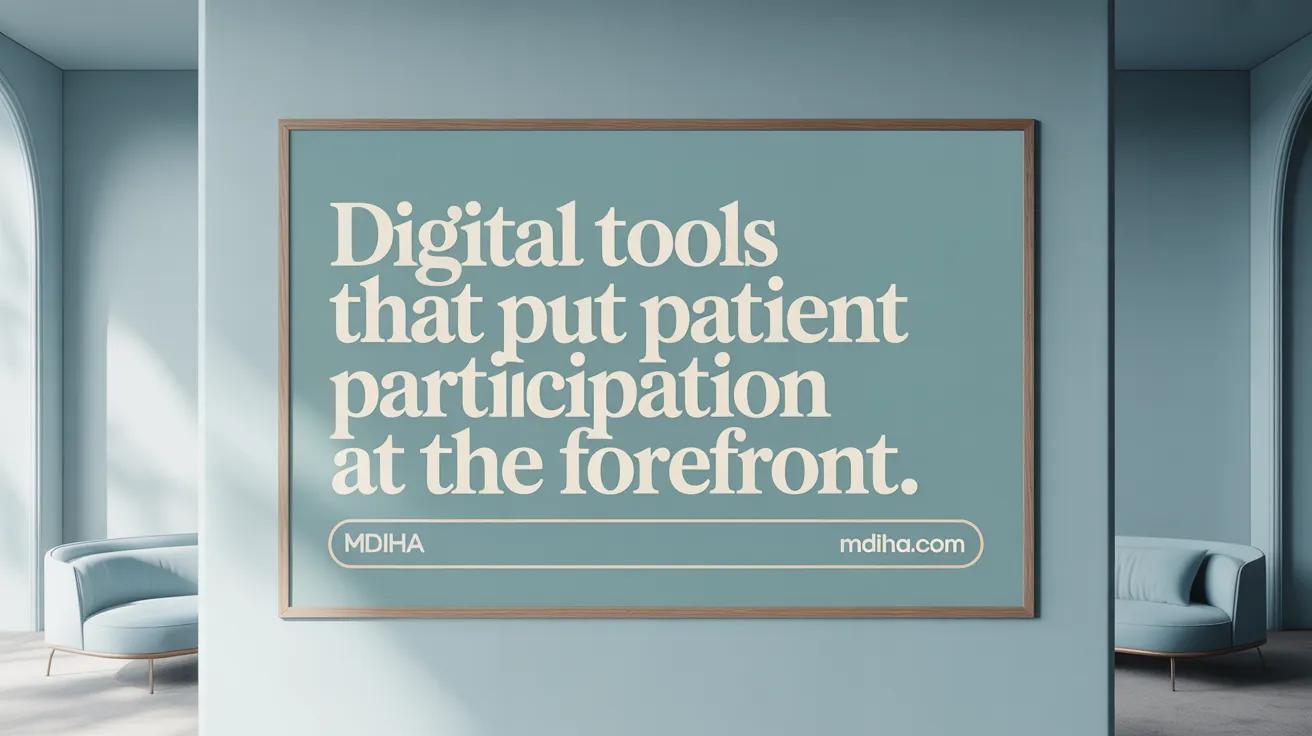
How are digital health platforms improving patient involvement?
Digital health platforms are revolutionizing patient engagement by making health information more accessible and personalized. Mobile health apps allow users to track their vital signs, medication schedules, and health goals, fostering proactive health management.
Electronic health records (EHRs) facilitate seamless sharing of medical data among healthcare providers, ensuring coordinated care and empowering patients to access their health history anytime. These records also enable patients to view test results, appointment schedules, and treatment plans, which increases transparency.
Virtual health assistants, such as chatbots and AI-driven support tools, provide around-the-clock assistance for health inquiries, medication reminders, and appointment bookings. These tools help patients stay engaged, adhere to treatment regimens, and receive tailored health advice.
Together, these digital tools promote better health education, encourage preventive measures, and support personalized care plans, transforming patients from passive recipients into active participants in their health journey.
| Platform Type | Functionality | Impact on Patient Engagement |
|---|---|---|
| Mobile Apps | Track health metrics, medication, lifestyle | Encourages self-management and awareness |
| Electronic Records | Access to health data, test results, history | Enhances transparency and coordination |
| Virtual Assistants | 24/7 support, reminders, advice | Improves adherence and proactive care |
| Overall Effect | Personalized, accessible health management | Empowers individuals and fosters healthier behaviors |
As these digital health tools become more advanced, their integration will continue to deepen, making healthcare more patient-centered and effective.
Case Studies Highlighting Technology’s Impact in Personalized Prevention
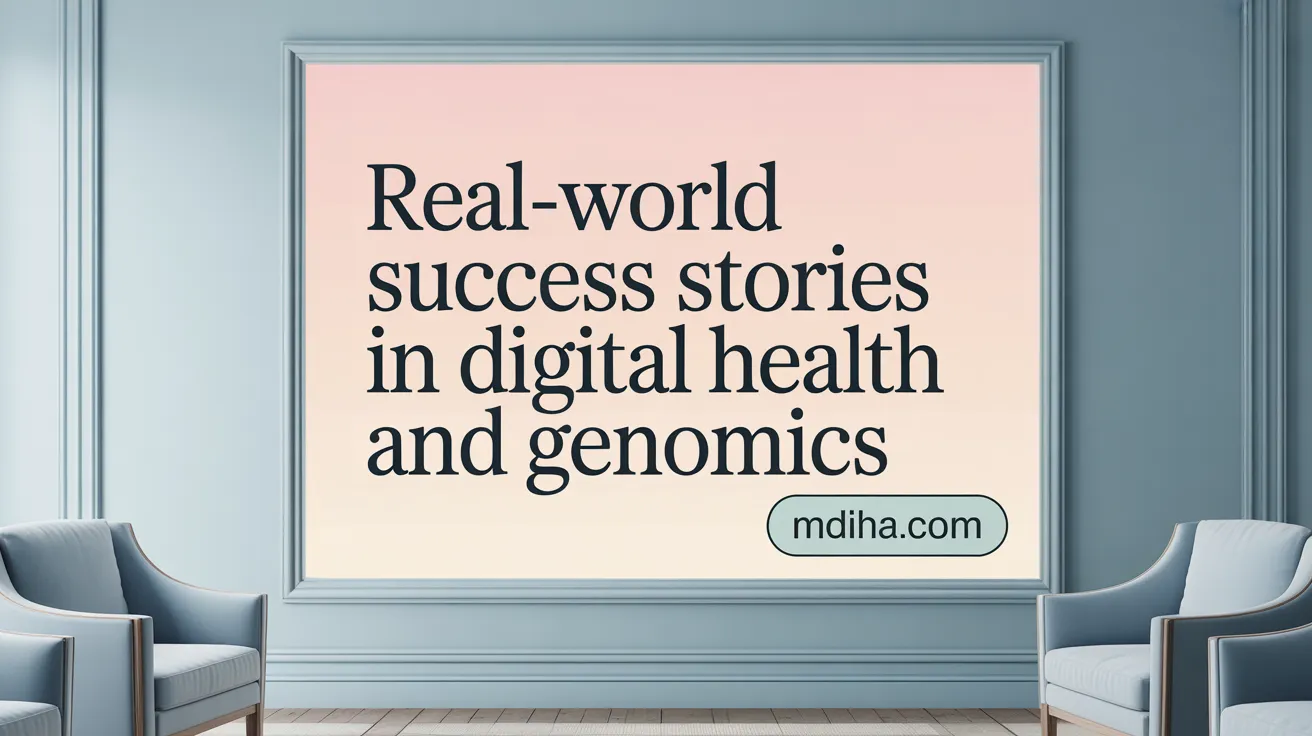
Breast cancer risk assessment and management
Recent advances incorporate genetic profiling, such as polygenic risk scores, to stratify women by their individual likelihood of developing breast cancer. These tools allow for more tailored screening protocols, ensuring high-risk individuals receive earlier and more frequent screenings. For example, genetic counseling combined with AI-driven risk prediction models enables personalized prevention strategies, including lifestyle modifications and preventive therapies.
Diabetes monitoring and treatment
Wearable devices and telemedicine play crucial roles in managing diabetes more effectively. Continuous glucose monitors (CGMs) transmit real-time blood sugar data to patients and healthcare providers, facilitating immediate adjustments to treatment plans. Digital therapeutics, such as mobile apps that analyze patient data, support lifestyle interventions and medication adherence. These technologies lead to better glycemic control and reduce the risk of complications with ongoing, patient-centered care.
Heart disease screening via wearable technology
Stanford Medicine's collaboration with Apple exemplifies how wearable devices can detect irregular heart rhythms, notably atrial fibrillation, which significantly contributes to stroke risk. The large-scale study enrolling over 400,000 participants leveraged Apple Watch sensors to monitor cardiac activity continuously. Early detection allows for timely preventative interventions, reducing hospitalizations and saving lives.
| Technology Application | Disease Focus | Innovation Example | Impact on Prevention |
|---|---|---|---|
| Genetic Risk Scores | Breast Cancer | Stratified Screening | Personalized screening schedules based on risk |
| Wearable Devices | Heart Disease | Apple Watch study | Early detection of arrhythmias |
| Digital Therapeutics | Diabetes | Mobile health apps | Improved glycemic control and lifestyle support |
| AI-Based Risk Prediction | Various | Multi-condition models | Tailored prevention and early intervention |
In these case studies, the integration of digital tools and advances in genomics exemplify how personalized prevention is becoming more precise and accessible. As these technologies evolve, they hold promise for proactive health management, ultimately aiming to reduce disease incidence and improve quality of life for diverse populations.
Challenges in Adoption: Navigating Privacy, Ethics, and Infrastructure Hurdles
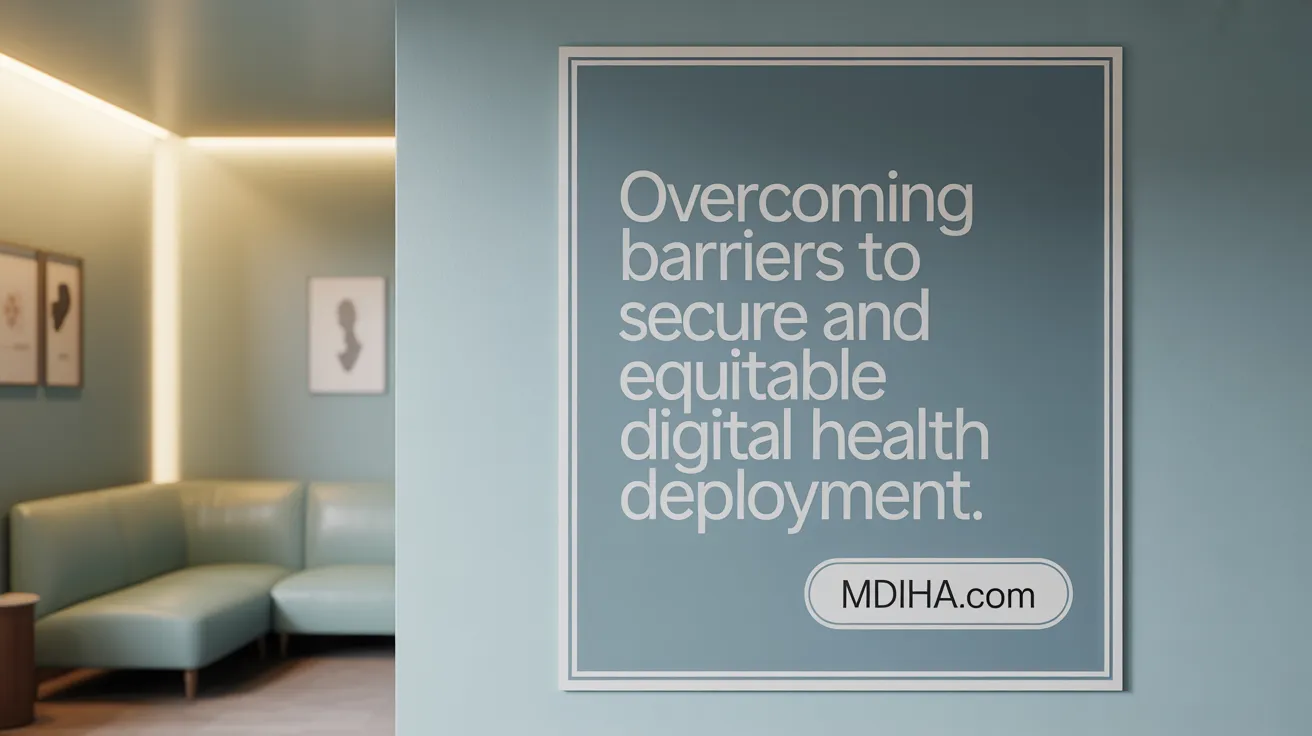
What challenges and considerations arise when adopting and implementing technological solutions in preventive healthcare?
Implementing advanced technologies such as AI, genomics, and digital health tools in preventive medicine involves tackling several significant challenges. One primary concern is data privacy and security. As health systems increasingly rely on electronic health records, wearable device data, and genomic information, safeguarding sensitive personal health data becomes paramount. Breaches or misuse could erode patient trust and lead to legal and ethical issues.
Another critical hurdle is algorithmic bias and ethical considerations. AI models trained on non-representative datasets can inadvertently perpetuate health disparities by providing less accurate predictions for certain demographic groups. Ensuring fairness and addressing potential biases are essential to delivering equitable healthcare services.
Infrastructure gaps and digital literacy disparities also pose obstacles. Many healthcare settings, particularly in low-resource regions, may lack the necessary technological infrastructure or staff trained to use and interpret digital health tools effectively. Without robust systems and training, the benefits of digital health innovations cannot be fully realized.
Regulatory and standardization issues further complicate deployment. Rapid technological advancements outpace existing regulatory frameworks, making it difficult to evaluate safety, efficacy, and quality consistently. Standardized evaluation processes are needed to facilitate approval and integration of AI-based diagnostics, telemedicine, and wearable devices.
Engagement from stakeholders—healthcare providers, patients, regulators, and technology developers—is vital. Building trust requires transparency, education, and clear communication about the capabilities and limitations of new tools. Ensuring equitable access and avoiding digital divides remain ongoing concerns.
In summary, the path to integrating innovative technologies into preventive healthcare demands comprehensive strategies that consider ethical, technological, regulatory, and social aspects. Overcoming these barriers is essential for responsible, equitable, and effective health advancements.
Regulatory and Ethical Frameworks Guiding AI in Preventive Healthcare
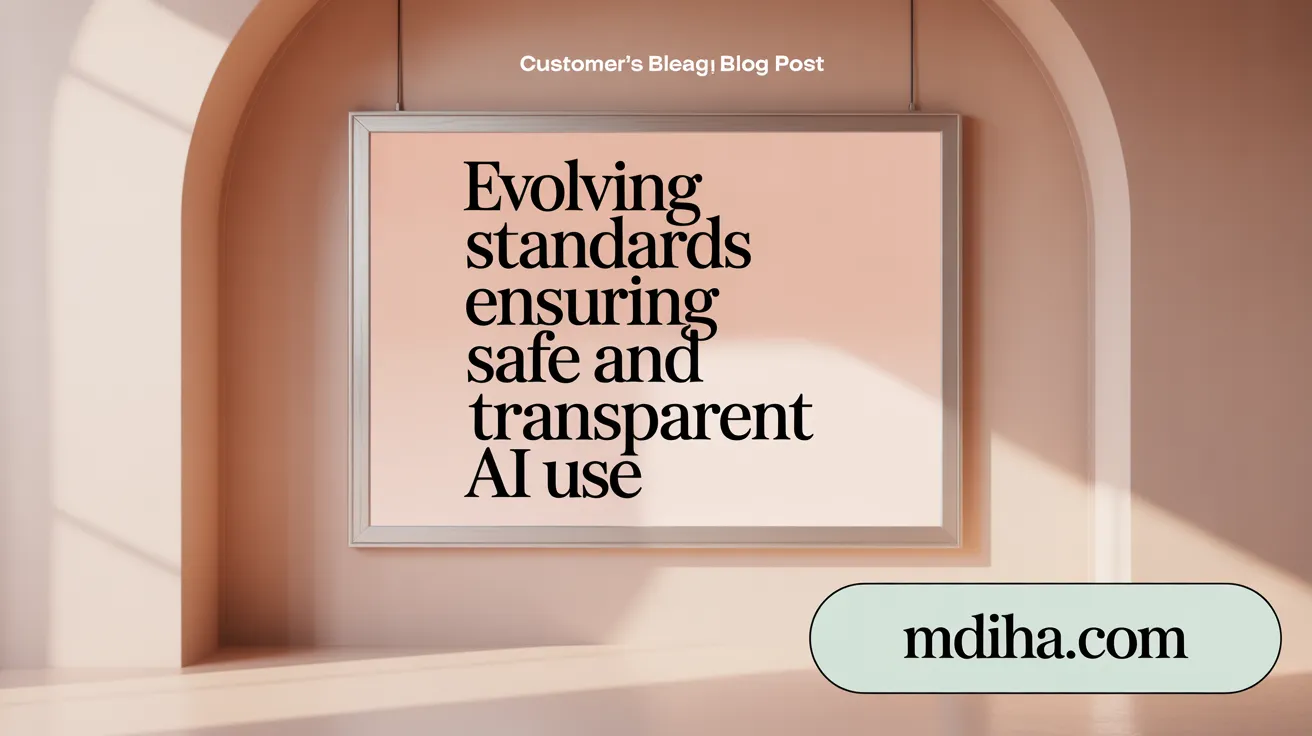
Evolving global regulatory standards
As AI technologies become integral to preventive healthcare, regulatory bodies worldwide are adapting their standards to ensure safety, efficacy, and ethical use. Agencies in the US, UK, EU, and Japan are developing frameworks to evaluate AI-driven medical devices, emphasizing rigorous testing and post-market surveillance. This evolving landscape seeks to foster innovation while safeguarding patient rights.
Explainable AI for transparency
A critical aspect of integrating AI into healthcare is ensuring transparency. Explainable AI (XAI) techniques, such as SHAP and LIME, are designed to make AI decision-making processes understandable for clinicians and patients. Transparency builds trust, facilitates regulatory approval, and helps clinicians interpret AI-generated recommendations, ultimately enhancing the quality of preventive care.
Balancing innovation with safety and privacy
Striking the right balance between advancing AI innovations and maintaining patient safety and privacy is essential. Ethical guidelines and data protection laws aim to prevent bias, ensure secure handling of sensitive health data, and promote equitable access. Addressing these challenges requires collaboration among technologists, regulators, and healthcare providers to foster responsible AI deployment.
The Role of AI in Optimizing Healthcare Operations and Resource Allocation

How is AI improving claims management and fraud detection?
Artificial intelligence is transforming administrative processes in healthcare. AI algorithms help detect fraudulent claims by analyzing patterns of billing and identifying anomalies that suggest misconduct. Natural Language Processing (NLP) tools scan claim documents swiftly, flagging suspicious activities with high accuracy. This not only reduces financial losses but also speeds up approvals, allowing providers to focus more on patient care.
What are predictive models for resource allocation?
Predictive analytics, powered by AI, are used to forecast the demand for healthcare services. By analyzing electronic health records, appointment histories, and population health data, these models identify which facilities and professionals will be needed most, at what times. Hospitals can then allocate beds, staff, and equipment more effectively, reducing wait times and ensuring readiness for future surges, such as during flu season or outbreaks.
How does AI support value-based care initiatives?
AI contributes to value-based care by helping providers identify high-risk patients and tailor interventions to improve health outcomes while lowering costs. Predictive tools estimate individual patient risks for readmission or complications, enabling proactive management. This data-driven approach aligns with the shift from volume-based to value-based healthcare, emphasizing quality and efficiency.
| Application Area | AI Technology Used | Benefits | Example Use Case |
|---|---|---|---|
| Claims management & fraud detection | NLP, anomaly detection algorithms | Faster processing, reduced fraud, cost savings | Fraud detection in insurance claims |
| Resource allocation | Predictive analytics, machine learning | Optimized staffing, reduced patient wait times | Bed and staff planning during flu season |
| Supporting value-based care | Risk stratification, predictive modeling | Better prevention strategies, improved patient outcomes | Targeted interventions for high-risk patients |
Advancing AI tools in healthcare continues to optimize operational efficiency, helping providers deliver better care while controlling costs.
Emerging Technologies Shaping the Future of Personalized Preventive Healthcare

What are the future prospects and potential innovations in technology-driven personalized health management?
The landscape of personalized preventive healthcare is rapidly evolving, driven by groundbreaking technological advances. Future prospects look exceptionally promising as new tools and methodologies integrate seamlessly with existing systems to improve health outcomes.
One of the most exciting innovations is the incorporation of advanced artificial intelligence (AI) models. These systems are capable of analyzing vast, complex datasets—such as genomic, environmental, and lifestyle information—to enable highly accurate risk prediction, diagnostics, and personalized treatment plans. This integration of big data and AI will allow for a shift from reactive treatment to proactive health management.
Wearable devices and digital therapeutics are at the forefront, offering real-time health monitoring and personalized health interventions. These tools empower individuals to track vital signs and detect early signs of disease, facilitating prompt medical responses.
Emerging technologies like 3D bioprinting and bioengineering are expanding the possibilities of custom medical devices and tissues. These innovations will enable treatments tailored precisely to a patient’s biological makeup, enhancing effectiveness and reducing adverse effects.
Organ-on-a-chip models are revolutionizing drug testing and disease modeling by replicating human organ functions on a microfluidic platform. This technology accelerates the development of targeted therapies, minimizes reliance on animal testing, and allows for more accurate prediction of human responses.
Advanced biosensors and liquid biopsies are changing diagnostics by enabling non-invasive, continuous monitoring of health markers. Liquid biopsies, for example, can detect cancer by analyzing circulating tumor DNA in blood, facilitating early interventions.
The potential for future health management extends into broader technological innovations such as robotic-assisted procedures, personalized implants through 3D printing, and the use of AI-powered virtual health assistants. Together, these advancements aim to make healthcare more accessible, precise, and preventive.
This technological evolution is complemented by efforts to improve health data sharing across platforms and borders, fostering a more democratized and equitable healthcare system. Ethical challenges, including data privacy and algorithmic bias, are actively addressed to ensure safe and fair use of these innovations.
In summary, the future of personalized health management hinges on integrating these technologies—ranging from bioengineering to AI and advanced diagnostics—creating an adaptable, patient-centered healthcare ecosystem that emphasizes prevention, early detection, and tailored interventions.
Building Trust and Adoption: Patient Perspectives and Education

How do patients perceive artificial intelligence and digital health tools?
Patient acceptance of AI and digital health applications varies widely. Some are eager to embrace innovations like wearable devices and telemedicine for their convenience and potential to improve health outcomes. Others remain cautious, concerned about privacy, data security, and the accuracy of AI-driven diagnoses.
Why is transparency and explainability important in AI-driven healthcare?
Trust is crucial for patient acceptance. Explaining how AI algorithms reach clinical decisions helps patients understand and feel comfortable with their use. Techniques such as simplified explanations or visualizations make AI outputs more accessible, encouraging confidence in digital health solutions.
What strategies can help improve digital health literacy among patients?
Efforts to enhance digital literacy involve educational campaigns, tutorials, and personalized support. Healthcare providers can offer clear guidance on using apps and devices, addressing concerns about data privacy, and understanding risk information. Building familiarity and trust facilitates broader adoption of AI tools, ultimately supporting better health management.
| Aspect | Focus | Benefits |
|---|---|---|
| Patient Acceptance | Education about AI benefits and safeguards | Increases willingness to use digital health tools |
| Transparency & Explainability | Clear communication about AI processes | Builds trust and reduces fear |
| Digital Literacy Strategies | Tutorials, support, and patient engagement | Empowers patients to participate actively in their care |
Global Health Implications: Extending Personalized Preventive Care to Underserved Populations
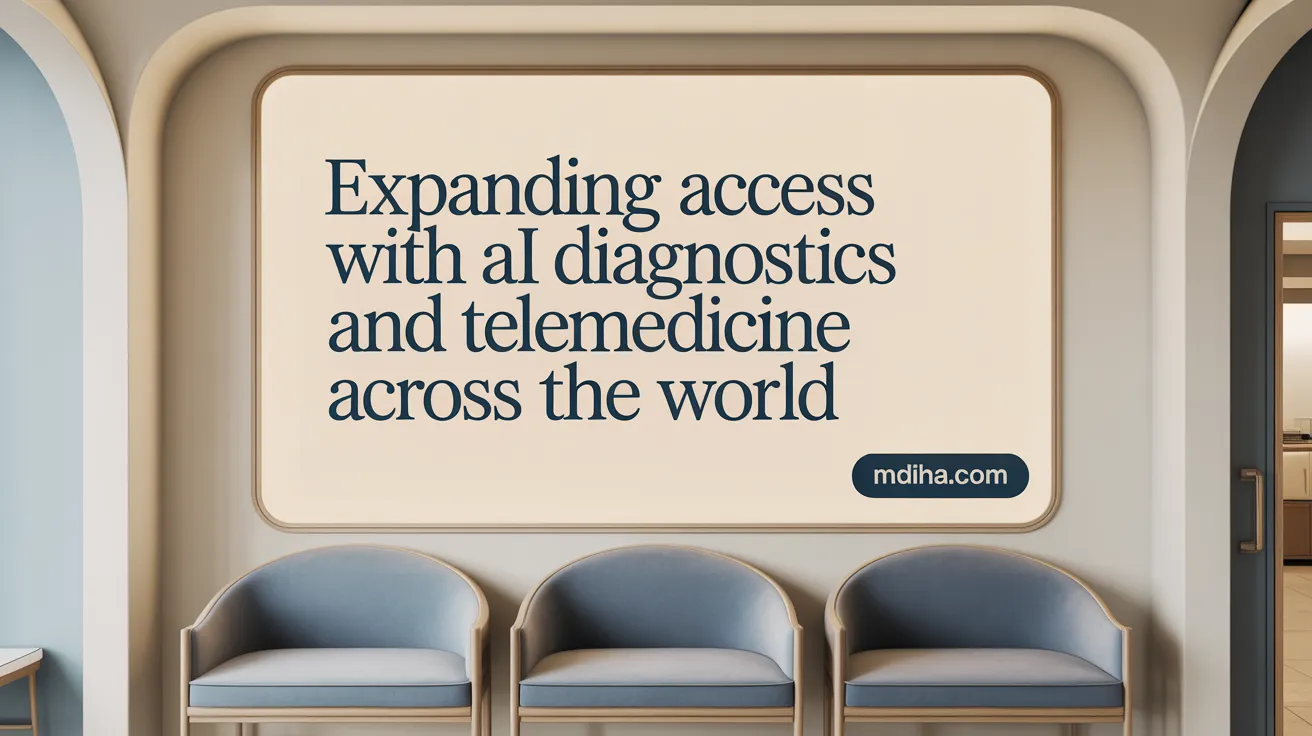
How do AI-enabled diagnostics work in resource-limited settings?
AI-enabled diagnostics utilize artificial intelligence to analyze medical data quickly and accurately, often with minimal equipment. These systems can interpret imaging, genetic, or biomarker data to aid in early disease detection. For example, portable devices combined with AI algorithms can screen for common conditions like tuberculosis or diabetic retinopathy without needing extensive laboratory infrastructure.
How is telemedicine expanding healthcare access?
Telemedicine bridges geographical and logistical gaps, allowing patients in remote or underserved areas to consult healthcare professionals. Through video calls, remote monitoring, and mobile health apps, individuals can receive diagnosis, treatment advice, or ongoing health management without traveling long distances. This technology is especially crucial during pandemics or in rural communities with few healthcare facilities.
What about equity in digital health deployment?
Ensuring fairness and equal access to digital health tools is essential. Efforts include providing affordable devices, improving internet connectivity, and designing user-friendly interfaces tailored to diverse populations. Bridging the digital divide helps prevent disparities, making personalized preventive care accessible to all, regardless of socioeconomic status.
| Technology Area | Applications in Underserved Areas | Benefits | Challenges |
|---|---|---|---|
| AI Diagnostics | Disease screening, risk assessment | Faster diagnosis, early intervention | Data quality, infrastructure |
| Telemedicine | Remote consultations, health monitoring | Increased access, reduced travel costs | Connectivity, literacy barriers |
| Digital Inclusion Strategies | Affordable devices, language-tailored apps | Broader reach, equitable healthcare | Funding, training |
Expanding advanced healthcare through AI, telemedicine, and inclusive digital strategies holds promise for reducing health disparities worldwide.
Charting the Path Forward in Tech-Driven Preventive Care
The integration of advanced technologies into personalized preventive healthcare signifies a watershed moment in medical practice, ushering in an era of proactive, precise, and patient-centered care. Artificial intelligence, genomics, wearable devices, and telehealth platforms collectively empower early disease detection, targeted interventions, and continuous monitoring, enhancing health outcomes and quality of life. Although considerable challenges in ethics, privacy, infrastructure, and equity persist, ongoing collaborative efforts between technologists, clinicians, regulators, and patients offer hope for responsible and inclusive adoption. Looking ahead, emerging innovations promise even greater customization and democratization of health management, ultimately transforming preventive healthcare into a globally accessible, dynamic ecosystem poised to meet the health demands of the future.
References
- The Application of Preventive Medicine in the Future Digital ...
- Digital technology can power personalized, preventive health ...
- AI In Healthcare: A New Era Of Personalized Patient Care
- Precision Medicine, AI, and the Future of Personalized ...
- A new era of precision medicine
- Revolutionizing Health Care with AI: A New Era of Efficiency ...
- Innovation and challenges of artificial intelligence ...
- cutting-edge advances in healthcare technology
- The Next Frontiers in Preventive and Personalized ...
- The Future of Personalized Healthcare Technology
